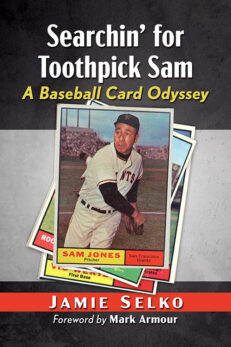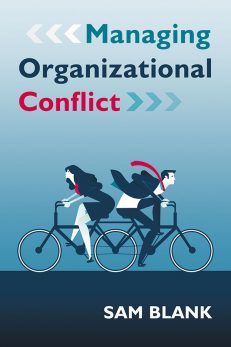Managing Organizational Conflict
$29.95
In stock
About the Book
Conflict in business and personal relationships is inevitable—much of the success of companies depends on how well they respond to it. Developing rapport, collaboration and cooperation hinges on positive conflict management strategies that stimulate innovation and growth where companies can look for solutions to common issues and needs. Conflict management can address dysfunctional outcomes that result in job stress, less effective communication and a climate of distrust, where working relationships are damaged and job performance reduced. Organizations must minimize and resolve internal and external conflicts to remain vibrant and profitable. Drawing on examples from a wide range of corporate experiences, this volume provides role-playing scenarios, checklists, tables and research studies to help employees, managers and owners better comprehend the dynamics of conflict in every interaction.
About the Author(s)
Bibliographic Details
Sam Blank
Format: softcover (6 x 9)
Pages: 232
Bibliographic Info: bibliography, index
Copyright Date: 2020
pISBN: 978-1-4766-7892-4
eISBN: 978-1-4766-3790-7
Imprint: McFarland
Table of Contents
Acknowledgments vi
Preface 1
Introduction 5
1. Aspects and Causes of Conflict in an Organization
Interests, Identities and Attitudes 9
Organizational Learning 10
Characteristics of a Learning Organization 12
Learning Ground Rules 14
Problem-Based Learning 15
Team Learning 16
Organizational Conflict 17
Work Group Role Expectations 20
Organizational Personality Dimensions 21
Organizational Development 23
Organizational Behavior 24
Interpersonal and Intrapersonal Conflict 27
Aspects of Trust in Conflict 28
Cultural Differences and Conflict 30
Gender Influences 31
Ambient Cultural Disharmony 32
Cross-Cultural Leadership 33
2. Conflict: Unavoidable Aspect of Organizational Life
Major Trends 35
Conflict Areas 36
Anticipating Conflict 39
People Issues 40
Employee Assessments and Social Exchange Theory 40
Sources of Conflict 41
Working Behaviors 42
Language and Styles of Conflict 43
The Cost of Organizational Conflict 45
Hidden Costs 47
Gearing Up for Training and Development 47
Leading Change 49
Redefining Leadership 51
Resistance to Change 52
Employee Resistance Is Challenging 53
3. Transformational Organizations
Why Organizations Fail 55
Transformational Leadership and Organizations 58
Leadership and Manager Differences 60
Exemplary Leadership 61
Differences Among Workers, Managers and Leaders 63
Organizational Measurement 63
Workplace Communication 64
Workplace Channels and Networks 68
Power and Influence 71
Personal Attributes as Leverage 74
Types of Leverage 75
Sharing Power in Organizations 76
Power and Politics 78
Managing Change and Stress 81
Implementing Dynamic Change 87
Using the Johari Window at the Workplace 91
4. Ethical, Moral and Human Issues in Organizational Conflict
Guidelines, Principles, Codes 94
Ethical Leadership 96
Values Conflict 98
Intellectual Capital 99
Conflict Management Styles 100
Individual Profile Styles 102
Motivations 103
Managing Differences 105
Group Thinking 107
Generational Differences 110
A New Mindset 113
Reaction to Crises and Catastrophes 114
Workplace Violence 117
Crisis Prevention and Management 119
Crisis Management Team 120
Organization’s Crisis Plan 121
5. Workplace Collaborations
Advantages of Collaboration 123
Group Purpose 125
Types of Collaborative Groups 126
Successful Groups 127
Collaborating and Not Competing 128
Functional and Dysfunctional Team Collaborations 130
Poor Collaboration 131
Positive Collaborative Efforts 134
Collaborating to Get More 135
Collaboration and Achievement 136
Virtual Teams 137
Six Thinking Hats 139
6. Conflict Resolution Approaches
Strategies, Purposes, Practices 143
The Flowchart of Conflict 145
Conflict Resolution Techniques 145
Negotiation 146
Receive and Then Deliver 148
Three Basic Negotiation Strategies 148
Competitive and Cooperative Negotiation 149
A True Negotiation Situation? 150
Team Negotiation 153
Framing in Negotiation 155
Questioning in Negotiation 157
Listening in Negotiation 158
Listening and Seeking to Understand Content and Feelings 161
Nonverbal Listening 162
Negotiation and Ethics 163
Smart Negotiators 165
Negotiation Obstacles and Deal Killers 166
What About Mediation? 167
Third-Party Assistance/Arbitration 172
Types of Arbitration Used by Organizations 174
7. Confrontational Innovation and Design
Common Design Thinking Tenets 175
Engagement and Confrontation 176
Types of Dissent 177
Difficult Conversations 178
Competencies to Handle Confrontation 180
Unmanageable Levels of Confrontation 181
Turbulent Times in a Company 183
Dismissal and Termination 184
Preparation for Taking Action 185
Management of Opportunities 186
Assertive Confrontation 187
8. Conflict Management
Approaching Employee Conflict 189
Openness of the Manager 191
Management Productivity 191
Conflict Manager Focus 193
Two Messages 194
Manager’s Toolbox 195
Playing Fair 195
Taking Charge 196
Managers and Critical Thinking 197
Managers as Change Agents 200
Influencing the Future 201
Dynamic Network Theory 202
Imperatives for Effective Managers 204
Case Studies
Case Study 1—Noisy Neighbors 207
Case Study 2—Apple Bashing 208
Case Study 3—We Deliver 209
Case Study 4—Working in HR 209
Case Study 5—The Team Project 210
Case Study 6—New Boss, New Rules 211
Case Study 7—You’re Under Arrest 211
Case Study 8—The Melt—Hops and Wine Stop—Taki-Slow 212
Case Study 9—Hawaii Beachwear Project 212
Case Study 10—Oh, What a Feeling 213
References 215
Index 221





